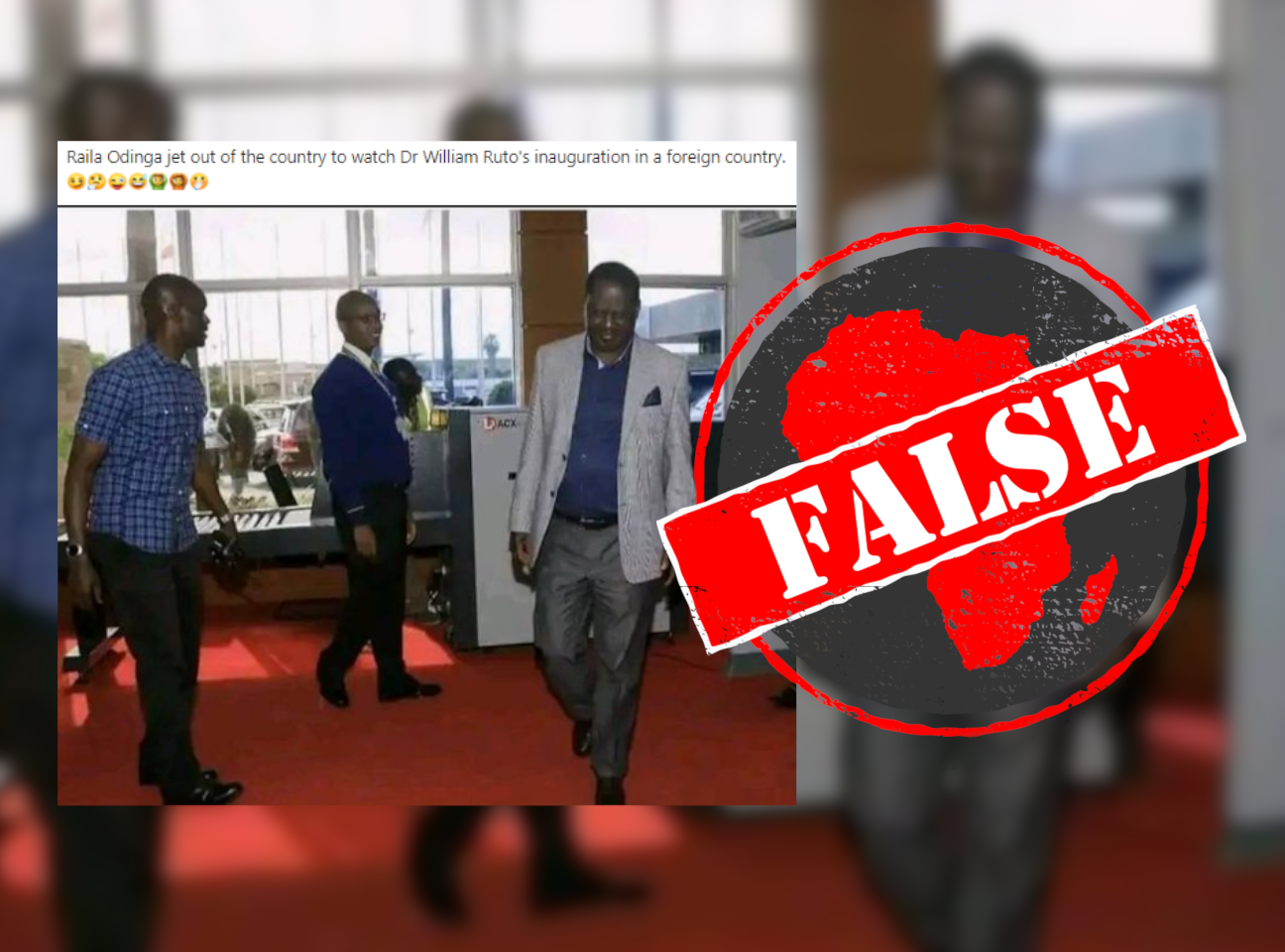IN SHORT: William Ruto was sworn in as Kenya’s president on 13 September 2022. In the days before, a photo of presidential candidate Raila Odinga went viral with the claim it showed him leaving the country ahead of his rival’s inauguration. But the photo was actually snapped in 2018.
A photo of losing Kenyan presidential candidate Raila Odinga is circulating on Facebook with the claim it shows him preparing to leave the country ahead of the inauguration of his rival, now president William Ruto.
“Raila Odinga jet out of the country to watch Dr William Ruto's inauguration in a foreign country,” reads one caption.
Kenya held a presidential election on 9 August 2022. Ruto of the United Democratic Alliance party was declared the winner, and sworn in on 13 September. Odinga, who heads the Orange Democratic Movement, unsuccessfully challenged the election results in court.
The photo with its claim has also been posted here, here, here, here, here and here.
But does it really show Odinga leaving Kenya before Ruto’s inauguration?

Odinga leaving for Ghana in 2018
A reverse image search of the photo reveals it has been online for four years.
Odinga posted it on Twitter on 9 September 2018, explaining that he was headed to Ghana for the funeral of former United Nations secretary general Kofi Annan, who died in August 2018.
His caption reads: “Departing to attend the burial of former UN Secretary General Dr. Kofi Annan in Ghana before proceeding to the U.S. to deliver lectures at Duke University in North Carolina, the George Washington University and at the Council on Foreign Relations (CFR), a non-profit think tank.”
Odinga earlier said he would not attend Ruto’s inauguration as he was out of the country. But the photo doesn’t show his departure.
Republish our content for free
For publishers: what to do if your post is rated false
A fact-checker has rated your Facebook or Instagram post as “false”, “altered”, “partly false” or “missing context”. This could have serious consequences. What do you do?
Click on our guide for the steps you should follow.
Publishers guideAfrica Check teams up with Facebook
Africa Check is a partner in Meta's third-party fact-checking programme to help stop the spread of false information on social media.
The content we rate as “false” will be downgraded on Facebook and Instagram. This means fewer people will see it.
You can also help identify false information on Facebook. This guide explains how.


Add new comment